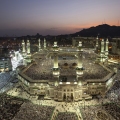Amid some of the most beautiful blue waters in the Mediterranean, the Maltese archipelago rises as a limestone sentinel, shaped by millennia of human history and devotion. Among its rugged hills, sheer cliffs, and fortified towns, a unique tradition runs deep: the veneration of the Virgin Mary. Today, this enduring legacy finds physical expression in the Melita Mariana Route, a pilgrimage trail connecting the principal Marian shrines of Malta and Gozo, blending spirituality, heritage, and natural beauty into a single path.
Ancient Echoes of Spirituality
Long before the first Christian churches rose on Malta’s rocky terrain, the islands served as spiritual centers, home to some of the world’s oldest freestanding structures. The megalithic temples of Ħaġar Qim and Ġgantija, dating back over 5,000 years, likely honored deities of fertility and life. With the arrival of Christianity, this deep reverence for the divine feminine found a natural continuation in the figure of Mary, celebrated as a symbol of maternal care and spiritual intercession.
Malta’s Christian heritage is often traced back to a dramatic episode in the year 60 CE: the shipwreck of the apostle Paul. According to the Acts of the Apostles, Paul, en route to Rome as a prisoner, found refuge on the Maltese coast, where he is said to have healed the sick and spread the seeds of a nascent Christian community. Some traditions suggest that Luke the Evangelist — the author most attentive to Mary in the Christian texts — accompanied Paul, possibly further embedding Marian devotion into the island’s early spiritual life.
Over the centuries, this devotion grew, shaped by Byzantine influences that brought iconographic art and liturgical traditions to the island. Even as Malta transitioned into the Latin Christian world, Mary retained a central role in local faith. Key moments in Maltese history, like the Great Siege of 1565 and the intense aerial bombardments of World War II, only reinforced this connection, as many locals attributed their survival to the intercession of the Virgin. Today, with over 360 churches scattered across its two main islands, Malta ranks among the world’s densest concentrations of Marian shrines per square kilometer.
The Melita Mariana Route: Heritage, Landscape, and Reflection
The Melita Mariana Route was conceived to rediscover Malta’s spiritual pathways, offering a journey as much about the present as the past. Spanning more than 60 kilometers, it links key Marian sanctuaries, picturesque villages, and ancient landmarks, inviting travelers to explore at their own pace, either on foot or by bike. The route unfolds in three main stages, two on the island of Malta and one on Gozo, each offering a different facet of the island’s layered history:
Marsaxlokk – This colorful fishing village marks the starting point. Nearby, the Tas-Silg archaeological site reveals layers of continuous worship stretching back to the Bronze Age, moving from pre-Christian goddess cults to Marian veneration. The local parish church, dedicated to Our Lady of Pompeii, stands as a contemporary site of pilgrimage.
Rabat and Mdina – Moving inland, the route reaches the Sanctuary of Mellieħa, partially carved into the living rock. According to tradition, this sanctuary holds a Marian icon painted by Saint Luke himself, making it one of the oldest sites of Marian devotion in Western Europe. Protected over centuries, it remains a vibrant focal point for local faith.
Mosta – The journey continues to the iconic Rotunda of Mosta, known for its immense dome — one of the world’s largest. This church’s story is woven into modern legend: during a 1942 air raid, a bomb pierced the dome during a crowded mass but miraculously failed to detonate, an event often cited as a modern Marian miracle.
Gozo – Crossing the channel to Malta’s sister island, the final stage leads to sanctuaries like Our Lady of Loreto in Ghajnsielem and the Sanctuary of Ta’ Pinu near Gharb. The latter, a stunning neo-Romanesque basilica, is built on the site where, in the 19th century, a local woman reportedly heard the voice of the Virgin, sparking a wave of pilgrimage that continues to this day.
The route also includes smaller chapels, wayside shrines, and tiny roadside altars, showing how Marian devotion remains deeply interwoven with the daily life of the Maltese. Many of these lesser-known sites are carefully documented on platforms like Pilgrimaps.com, which offers interactive maps and detailed historical insights, making the journey both a spiritual and educational experience.
XirCammini: Reviving Pathways, Restoring Stories
This revival owes much to XirCammini, a Maltese non-profit dedicated to promoting spiritual hiking. Inspired by legendary routes like the Camino de Santiago and the Via Francigena, XirCammini has worked tirelessly to restore and signpost ancient trails, promoting a slower, more reflective form of travel. In partnership with the Malta Tourism Authority, this group has transformed forgotten paths into vital cultural arteries, attracting pilgrims and wanderers alike.
XirCammini’s vision extends beyond Malta, linking its trails to broader European pilgrimage networks, allowing travelers to connect the Mediterranean to the Atlantic in a single, continuous journey.
Ultimately, the Melita Mariana Route offers more than a religious experience. It is a call to discover a side of Malta far removed from its bustling beaches and nightlife — a landscape of rural paths, silent chapels, and timeless villages where the past still whispers beneath every stone.
For those willing to walk, to slow down, and to engage with a different pace of life, this route presents a rare chance to connect with the essence of travel itself: a journey not just through space, but through history and meaning.




